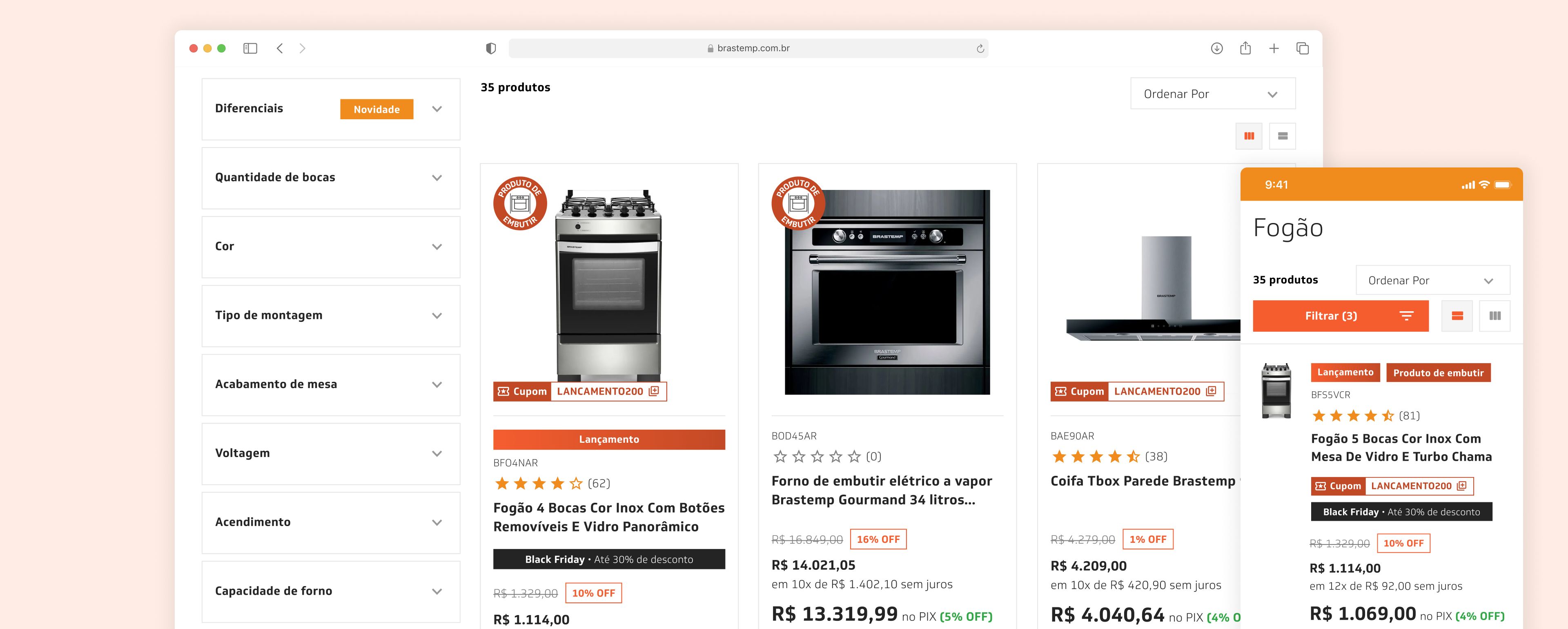
Brastemp's Black Friday 2022
My role Senior Product Designer
Timeline August - November 2022
Brastemp is a Latin American brand under Whirlpool Corporation and one of the biggest and most traditional household appliances manufacturers in Brazil. Whirlpool has been investing in their brands' ecommerce in the last couple of years, mainly during and after the pandemics.
The Conversion team was composed of a PM, a PO and an Agile coach. In the Upstream there were a Senior Product Designer (here I was 👋🏼), a CRO analyst and a SEO analyst. In the Downstream there were a Tech Lead, 3 Devs and a QA analyst. The focus of our scope was the whole flow a user goes through to buy a product within Brastemp website, which is: Homepage > Category page > Product page > Cart page > Checkout.
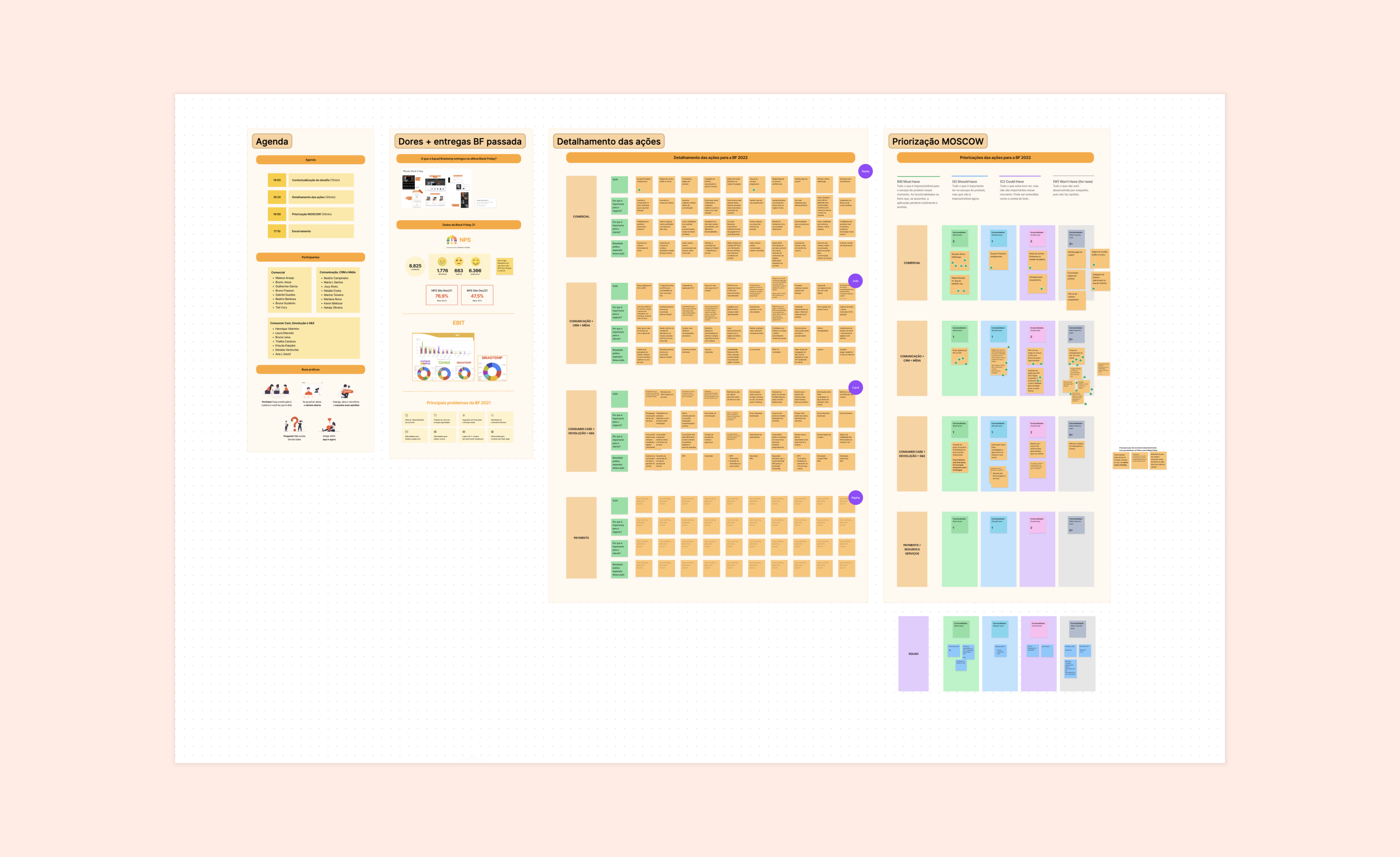
Crossteam workshop's Figjam board
Black Friday is the most important date during the year for Whirlpool Corporation. Revenue increases by up to 300% compared to the annual avarage revenue. Because of that, the Conversion team has the yearly responsibility to plan initiatives for Brastemp's Black Friday in alignment with the business needs from different areas of the company, such as Commercial, Consumer Care, Payments, Media & CRM, among others. Together with the PM and PO, I started arranging a crossteam workshop session in which we could understand the expectations and priorities for Black Friday 2022 in consonance with Conversion team's H2 business goals and North Star.
Alongside the PO, we envisioned which were the most aproppriate frameworks to explore the stakeholders' ideas and prioritize them. At the end, we got to this final arrangement:
1.
Introduction with BF 2021's pain points, deliverables and takeaways
2.
Description of up to 10 initiatives for each business area
3.
MOSCOW framework to prioritize the initiatives specified before
In the stage 2, we asked the stakeholders to also describe 3 main points for each initiative:
- Why is this action important for the business?
- Why is this action important for the user/customer?
- Which is the expected practical result of the initiative?
During the last phase, we applied the MOSCOW framework, so the business teams could organize the ideas they had into 4 groups:
- Two Must have actions (essential initiatives for the product)
- One Should have action (not essential but it's important)
- Two Could have actions (nice to have)
- Two or more Won't have for now actions (lowest priorities)
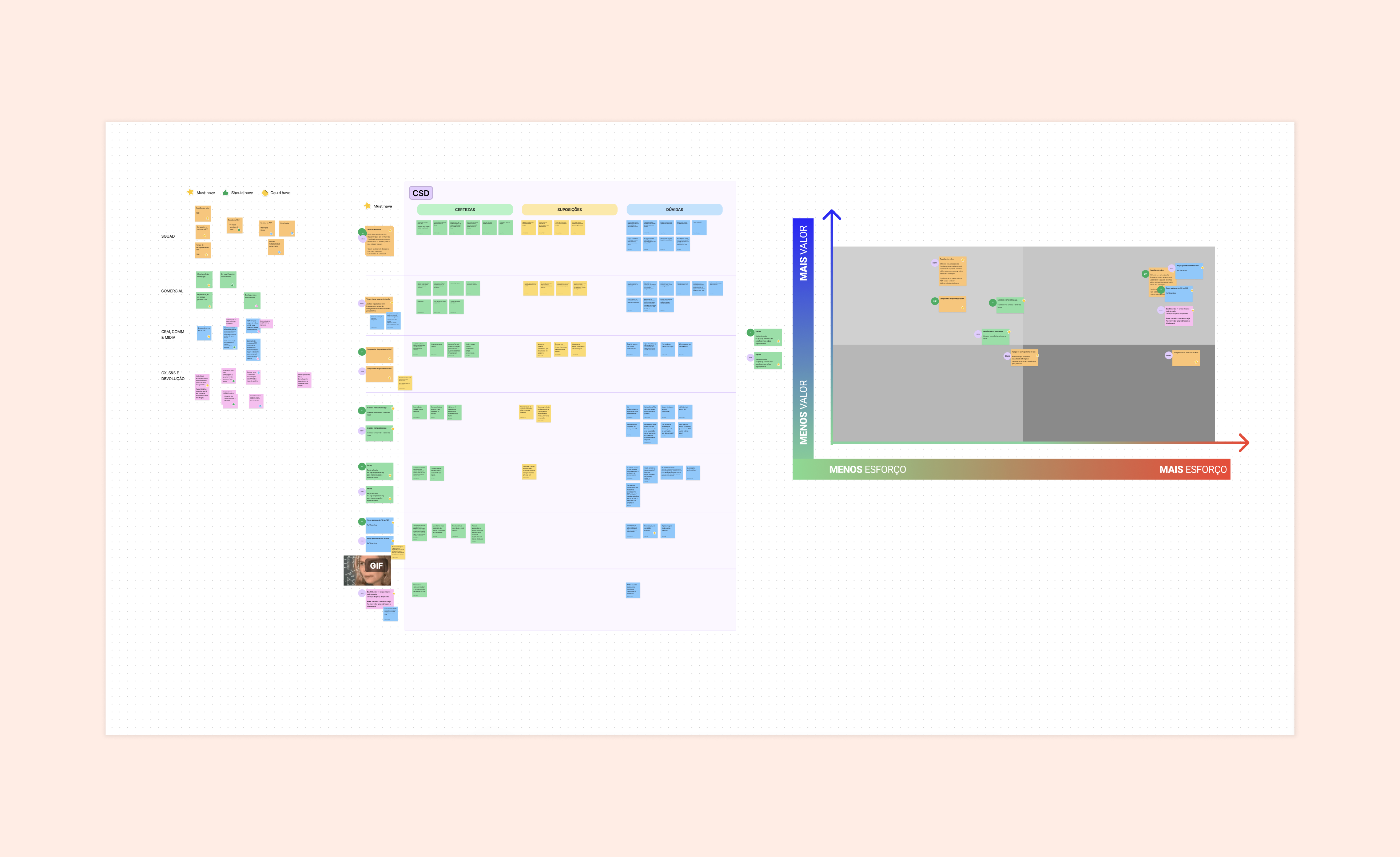
Workshop's Figjam board with Conversion team
Following the workshop with the stakeholders, we did a two-round 1h30 internal meeting with the intention of analyzing the proposed initiatives. Firstly, we ran the MOSCOW technique again but now by the team's perspective of the actions suggested by the stakeholders. After that, we used a Certainty / Assumption / Doubt Matrix to deep dive into all the items, so all team members could be on the same page. Finally, we placed the action points in a Value / Effort Matrix framework, so that we could create a roadmap and backlog of initiatives for Black Friday 2022.
Revamping Brastemp's product card
In 2021, 9.4% of Brastemp's return solicitations was because users had selected a different payment method or hadn't understand the price right. In Brazil, there are multiple methods of paying an order, such as: credit card, boleto (very common in Brazil), Pix (available only in Brazil), among others. However, credit card is still the most used payment method, because it's quite common to pay in 12, 18 or even 21 monthly installments. Therefore, it's usual to see some e-commerces offering different prices for payment methods that can't be paid in installments, as boleto or Pix. All these different prices can cause a lot of confusion for users/customers, if they're not displayed clearly.
9.4%
of return requests due to users had selected a different payment method or hadn't understand the price right
23.4%
of return solicitations due to users had bought the wrong product (model, dimension, quantity etc)
29%
of January 2022 returned products was bought during Black Friday 2021 and Cyber Week
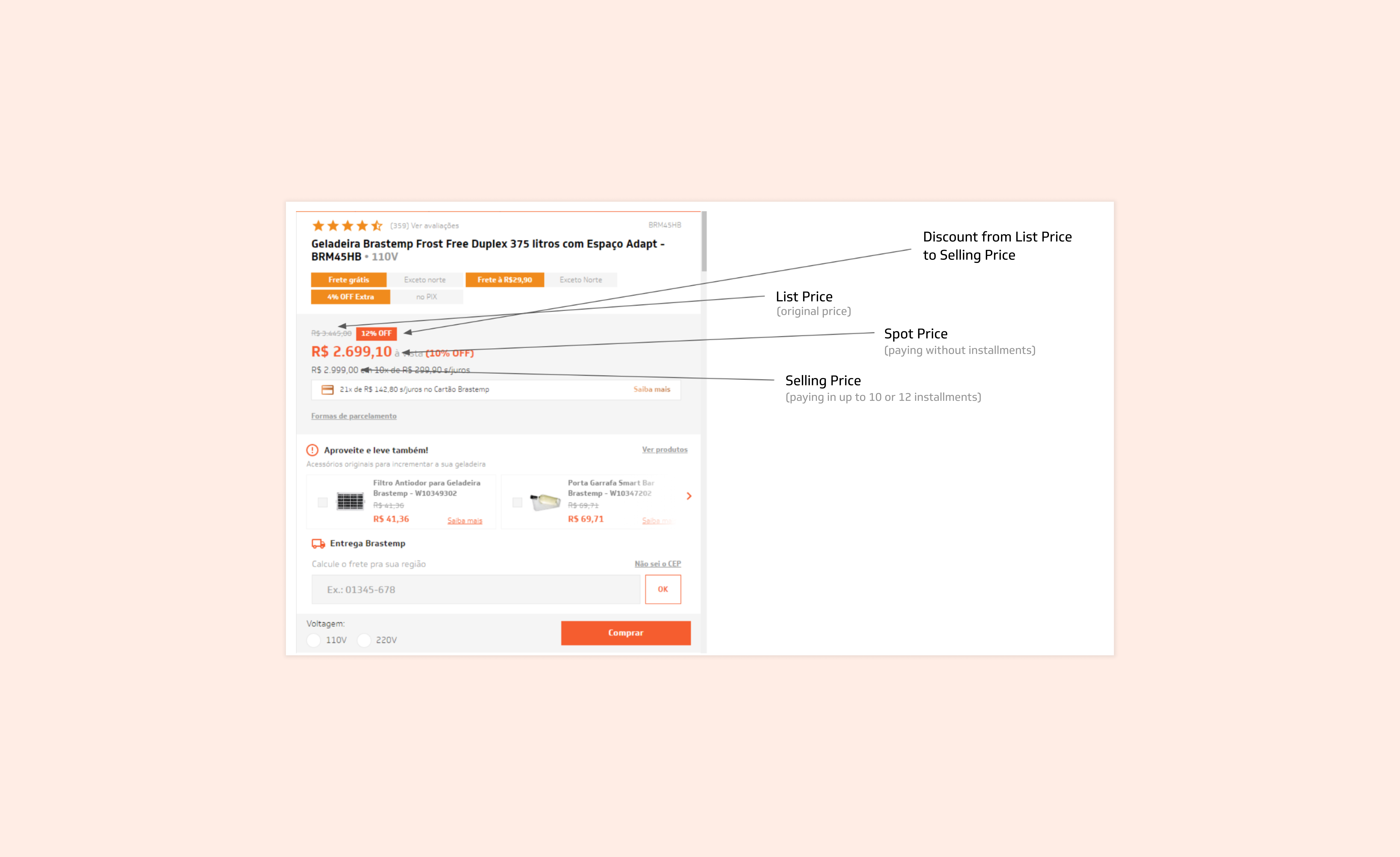
Diagram of how the prices were displayed
Hypothesis
If we upgrade how the different prices, payment methods and badges are displayed in the product card, users could be assured of the orders they made and thus decrease the return rates.
Since we had discussed with plenty of different business areas during the BF 2022 workshop, most of them helped us by sending inputs about return rates, complaints about the visualization of prices, users not being able to use a coupon on the purchase etc. In addition, the UX Research team had recently prepared powerful material regarding Brastemp users' buying triggers. All those materials were a great kickstart to deepen my understanding of the subject and, later, start analysing the product card itself.
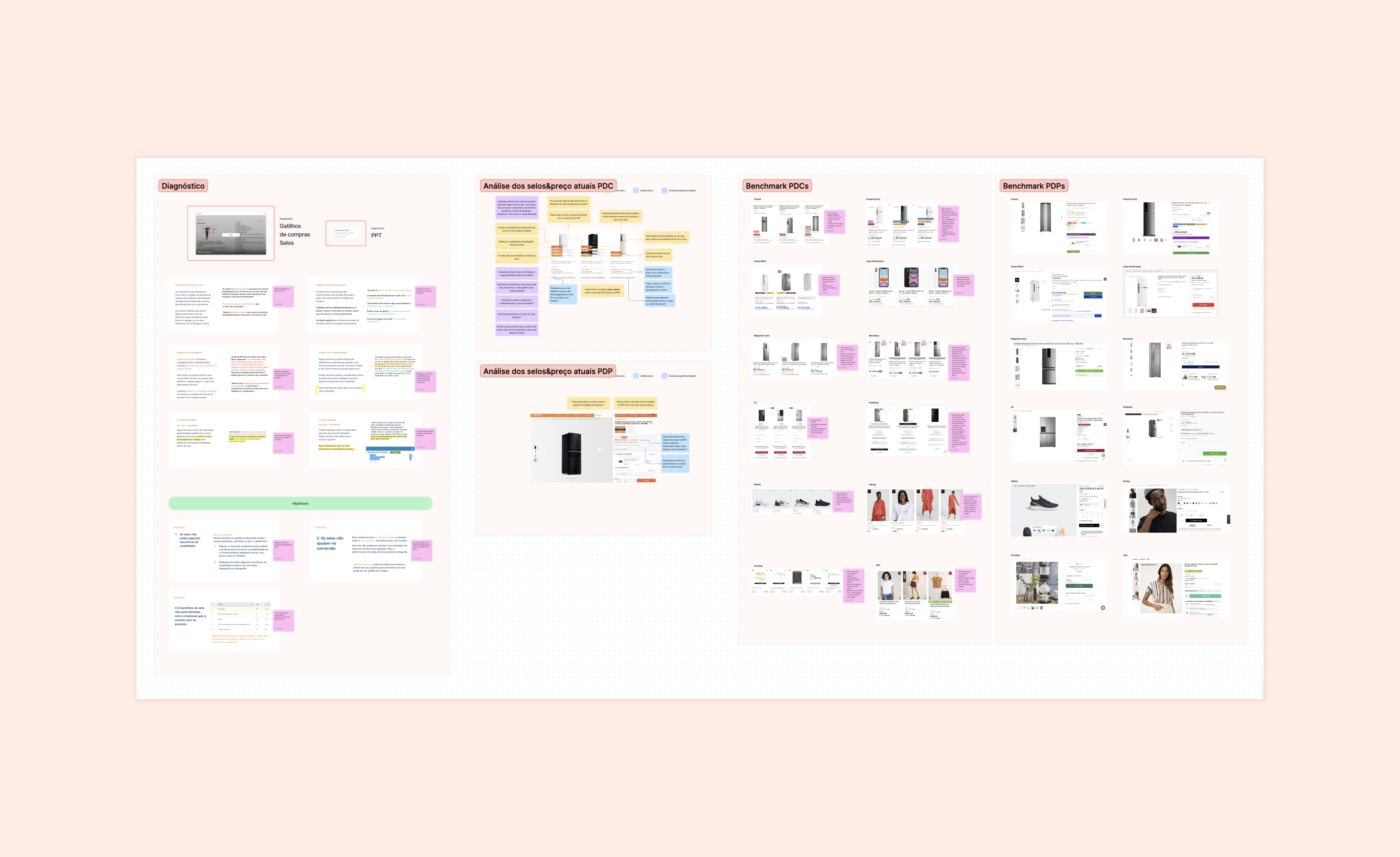
Screenshot of the Discovery board in Figjam
I aimed to identify usability points for iteration and also to improve the interface of the product card. The prior one had plenty of labels and badges above the product image, which reduced its visibility. Moreover, the amount of labels and badges decreased the impact of the message they wanted to convey to the user, since there wasn't a specific highlight.
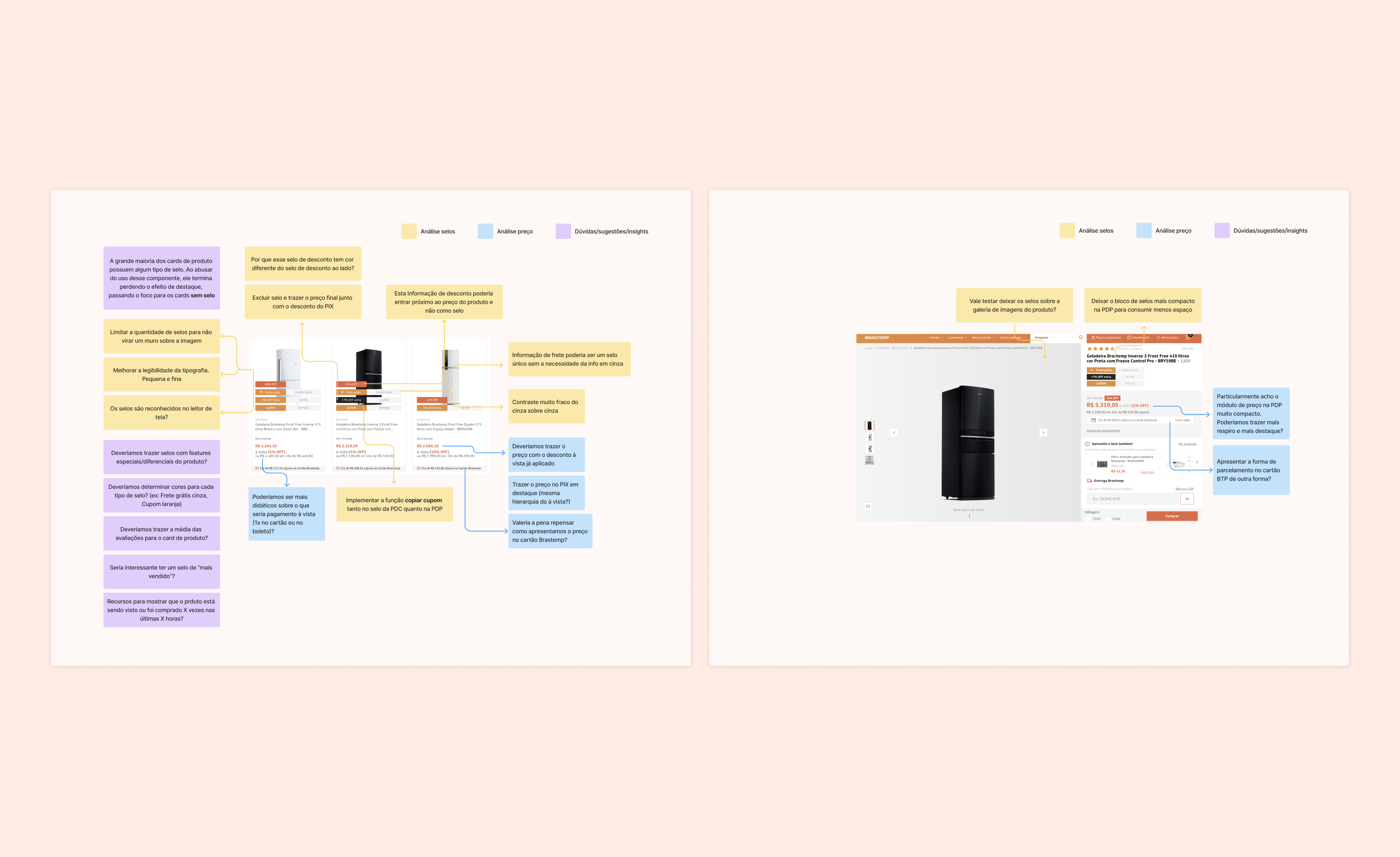
Product card and product page analysis
The points below were the main changes applied to the new product card when redesigning it:
- Understand what really needed to be a badge or label, in order to clear the product image component
- Improve the text hierarchy, highlighting the product name and prices.
- In agreement with the Commercial team, I rearranged how the prices and discounts were displayed and made their hierarchy explicit by using different type sizes and weights.
- Previously, the coupon badge wasn't interactive, so users needed to copy it by highlighting the word with the pointer. Now, by clicking on the coupon component, it's automatically copied.
- The stakeholders asked us to add a badge in the product card stating that it is a built-in appliance. This was also one of the return reasons that users used to complain about, because it wasn't clear information. Therefore, I placed a badge in the top-left corner of the card, which is normally empty, so it doesn't cover any part of the product image.
- Social proof is key to building confidence in users/customers, especially when purchasing a high-priced product, so I added the customer review summary to the card.
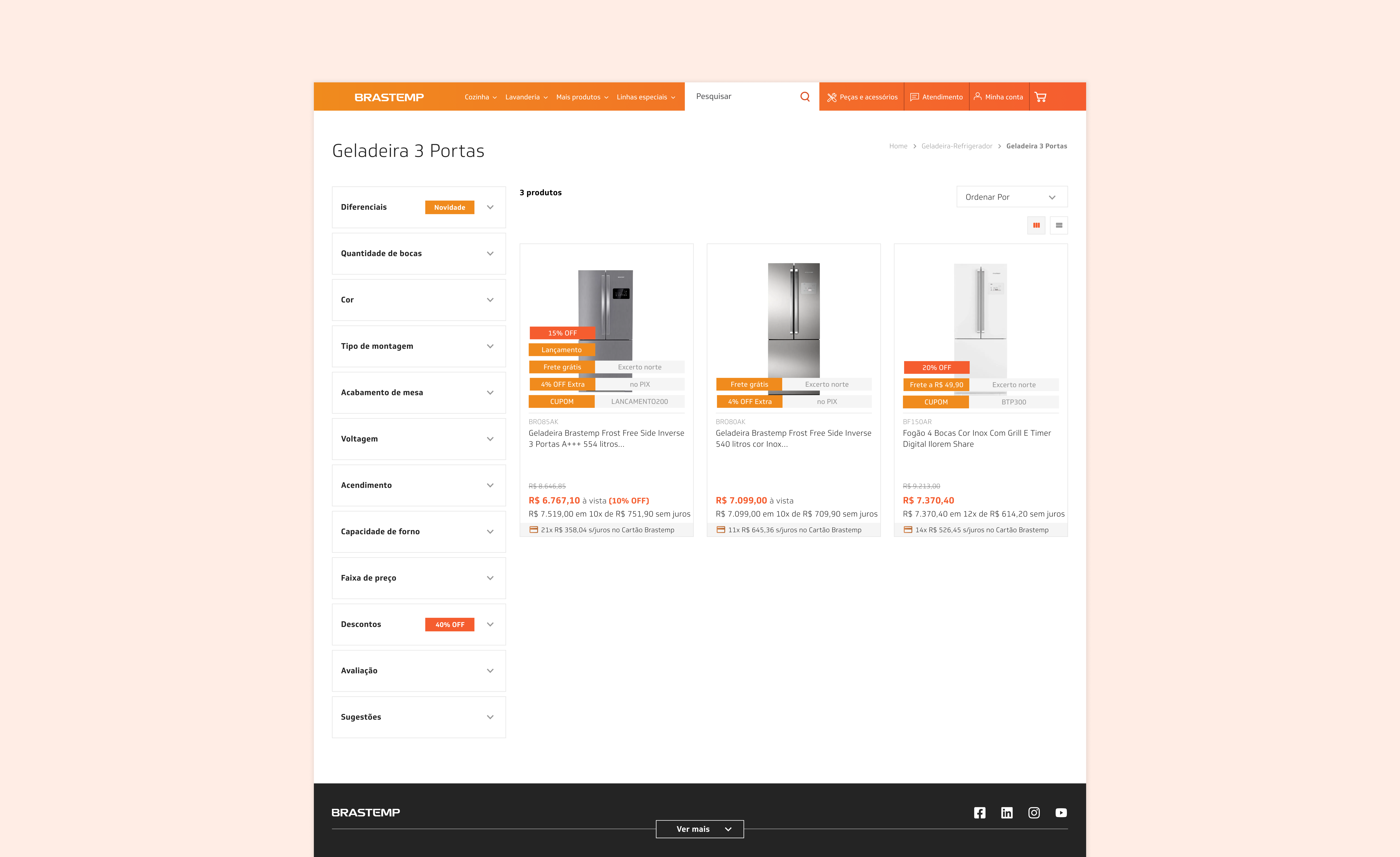
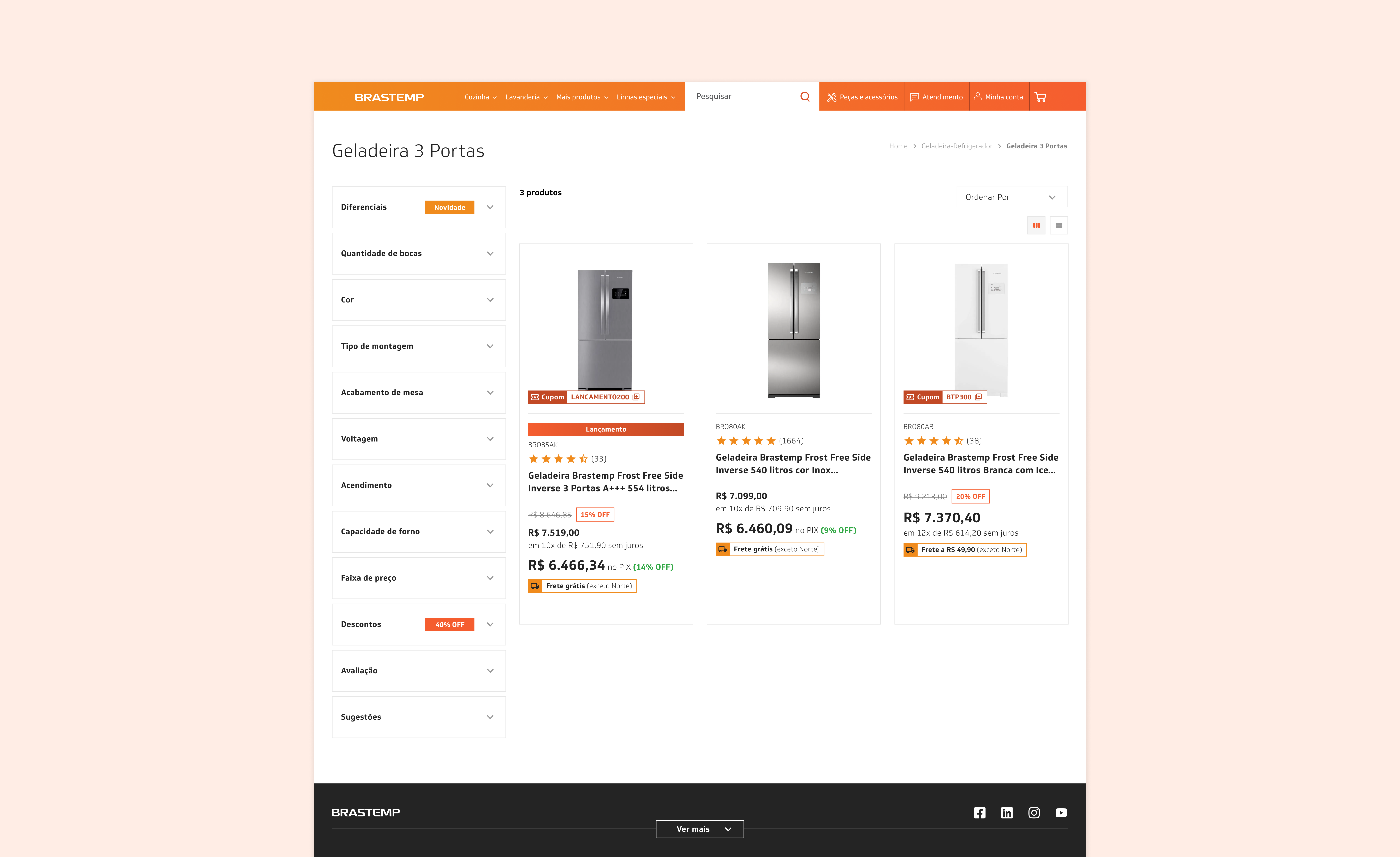
Former product card vs. new product card
(horizontally drag the handlebar)
For testing the product card, I used a remote testing tool called Testa Isso ("Test This", in Portuguese), in which I uploaded the Figma prototype link for both desktop and mobile versions, so I could see if the redesign I did could be validated by users.
I ran the test with 6 users, being 3 for desktop, 3 for mobile. When I received all testing recordings and answers, I compiled all observations and insights in a spreadsheet available for all team members.
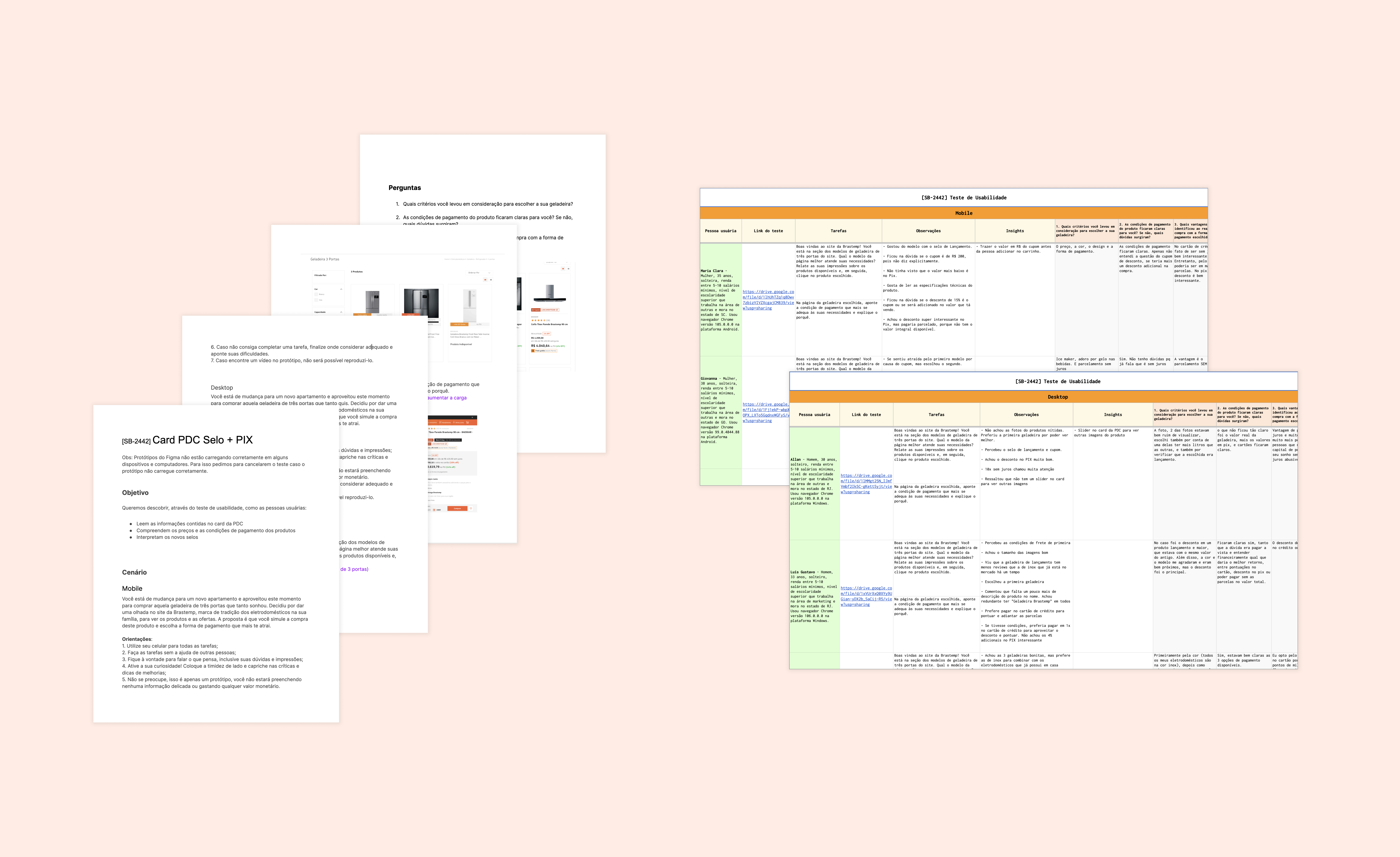
User testing script and compilation
I left Whirlpool before I could map how impactful the redesigned product card was. However, here are the indicators that could tell us if it was successful:
1.
Raising the number of orders using Pix as the payment method
2.
Reducing return rate of products bought using a different payment method
3.
Increasing the amount of purchases using coupons
© João Menezes 2025. Built with Semplice.